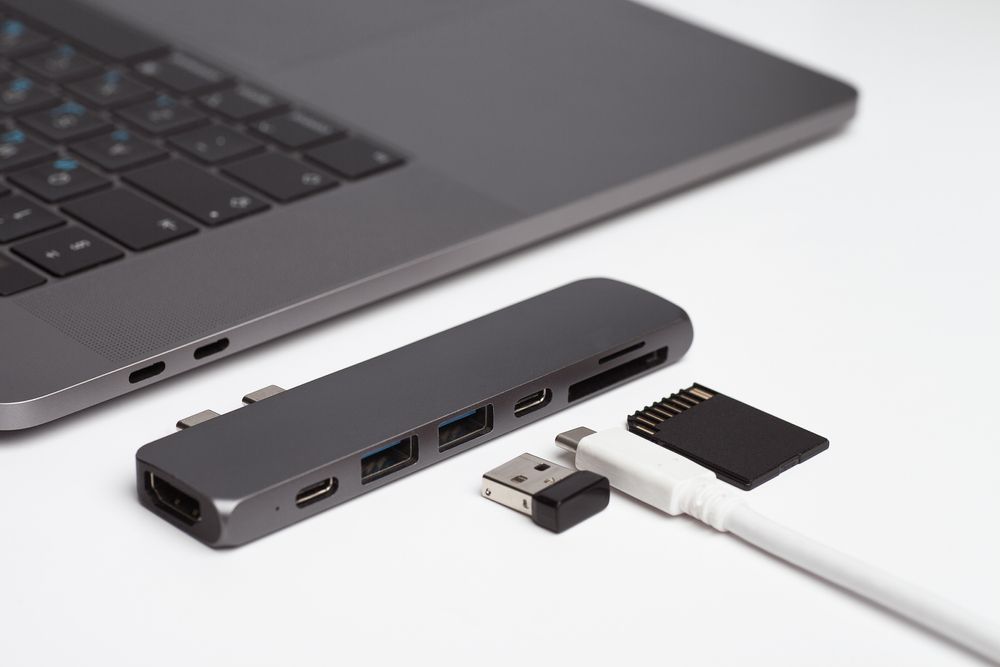In an increasingly wireless world, many devices still rely on good old-fashioned USB ports — and yet, modern laptops and desktops often come with fewer ports than ever. Whether you need to connect external drives, charge multiple gadgets, or plug in peripherals like a mouse, keyboard, or webcam, a reliable USB hub can quickly transform your limited I/O into a fully equipped workstation.
But not all USB hubs are the same. From port types and power delivery to data speeds and build quality, choosing the right one depends on how you work, what you connect, and the devices you own. This guide will walk you through the key factors to help you select the best USB hub for expanding your connectivity.
1. Determine What Devices You Need to Connect
Before you shop, take inventory of the devices you use daily. Consider both the type and number of accessories you’ll want to plug in.
Common USB Devices:
-
External hard drives or SSDs
-
Flash drives or memory card readers
-
Mice and keyboards
-
Printers and scanners
-
Webcams and microphones
-
Game controllers
-
Smartphones and tablets (for charging and syncing)
If you often connect more than 2–3 devices, a 4-port or 7-port USB hub may be ideal. For users with a mix of peripherals and high-speed storage, be sure to choose a model that balances power and speed.
2. Understand USB Types and Speeds
USB hubs come in various versions, and the differences affect both speed and compatibility. Understanding the basic USB standards helps you avoid bottlenecks and future-proof your setup.
Common USB Standards:
-
USB 2.0: Basic connectivity at 480 Mbps. Suitable for keyboards, mice, and printers — not ideal for data transfer.
-
USB 3.0 / 3.1 Gen 1: Up to 5 Gbps — great for external drives and media transfer.
-
USB 3.1 Gen 2: Up to 10 Gbps — ideal for high-speed storage or video capture.
-
USB 3.2 / 4.0 / Thunderbolt 3/4: Support 20–40 Gbps and advanced features like video output and daisy chaining.
Always check your computer’s USB ports and match the hub’s top speed. If your laptop only has USB 2.0, buying a USB 3.2 hub won’t make transfers faster — but it’s good for future devices.
3. Choose Between USB-A and USB-C Hubs
The shape of the connector matters — especially as newer devices shift to USB-C. Most hubs are either USB-A or USB-C, depending on what they plug into.
USB-A Hubs:
-
Standard rectangular connector
-
Compatible with older computers and desktops
-
Works well for basic peripherals and legacy gear
USB-C Hubs:
-
Smaller, reversible connector
-
Compatible with newer laptops, tablets, and phones
-
Often includes additional features like charging, video output, and Ethernet
If your device only has USB-C ports (like many MacBooks and ultrabooks), a USB-C hub is essential. Some hubs even offer both USB-A and USB-C ports for maximum flexibility.
4. Decide Between Powered and Unpowered Hubs
USB hubs come in two main types: bus-powered and self-powered. The right choice depends on the type of devices you plan to connect.
Bus-Powered Hubs:
-
Draw power from your computer’s USB port
-
Lightweight, portable, and cable-free
-
Best for low-power devices like mice, flash drives, or keyboards
Self-Powered Hubs:
-
Plug into an external power source (AC adapter)
-
Provide consistent power to high-demand devices
-
Ideal for hard drives, smartphones, tablets, or multiple accessories at once
If you regularly charge phones or run several external drives, a powered USB hub prevents voltage drops and disconnections.
5. Look for Data Transfer and Charging Capabilities
Some USB hubs are designed for data transfer only, while others also include dedicated charging ports or support Power Delivery (PD) via USB-C.
Useful Features:
-
Charging ports (up to 2.4A): Quickly power up smartphones or tablets.
-
USB-C PD pass-through: Lets you charge your laptop while using the hub (ideal for MacBooks or Chromebooks).
-
Quick Charge (QC) support: Speeds up compatible device charging.
Note that standard USB 3.0 ports deliver limited power (up to 0.9A), so if fast charging is a priority, choose a hub that supports it explicitly.
6. Consider Port Layout and Build Quality
Design matters more than you think — especially if you’re using your hub on a cluttered desk or when traveling.
Design Factors:
-
Spacing: Avoid cramped ports if you use large USB sticks or dongles.
-
Aluminum or reinforced plastic housing: More durable and resistant to heat.
-
Built-in vs detachable cables: Built-ins are more compact; detachable cables offer flexibility.
-
On/off switches: Useful for managing power to each device.
A well-built hub with intuitive port layout can reduce cable mess, device wear, and connection issues.
7. Explore Multi-Function USB Hubs
If you want more than just USB ports, look into multiport adapters or USB-C docking stations that include additional types of connectivity.
Common Add-On Features:
-
HDMI / DisplayPort: Connect external monitors (up to 4K resolution).
-
Ethernet port: Wired internet access for faster, more stable connections.
-
SD / microSD card readers: Useful for photographers and content creators.
-
Audio jacks: Connect headsets, microphones, or speakers.
These hybrid hubs are especially popular with USB-C laptops that lack full-size ports. They combine power, data, video, and networking into a single compact device.
8. Think About Portability and Size
If you work on the go, portability is key. Compact hubs are easy to slip into a bag but may offer fewer ports or features. For fixed workstations, a larger hub with more ports and a power supply might make more sense.
Portable Hub Features:
-
Lightweight and compact
-
Minimal cables
-
Aluminum casing for durability
Desktop Hub Features:
-
7+ ports
-
External power supply
-
Integrated stand or mounting bracket
Match your hub size to your work style — frequent travelers will appreciate simplicity, while desk-bound professionals may benefit from expanded connectivity.
9. Check Compatibility and Operating System Support
Most USB hubs are plug-and-play, but it’s still important to check compatibility — especially if you’re using Linux, macOS, or Android.
Common Compatibility Questions:
-
Does it support macOS or ChromeOS features like DisplayLink?
-
Will it charge your device while in use?
-
Are driver installations required?
-
Are all ports usable at once?
Read user reviews or manufacturer notes if you’re using niche hardware, tablets, or older devices.
10. Set a Realistic Budget
USB hubs vary widely in price depending on their feature set, build quality, and brand reputation. A higher price often means better reliability, more ports, or advanced functions like video or charging.
Budget Guide:
-
$10–$20: Basic USB-A hubs with 4–7 ports (USB 2.0 or 3.0)
-
$25–$50: USB-C hubs with Power Delivery and multi-function ports
-
$50–$100+: Docking stations with video, Ethernet, SD card slots, and external power
Choose a hub that fits your needs without overpaying for features you won’t use. Consider future-proofing if you expect to upgrade your laptop or accessories soon.



